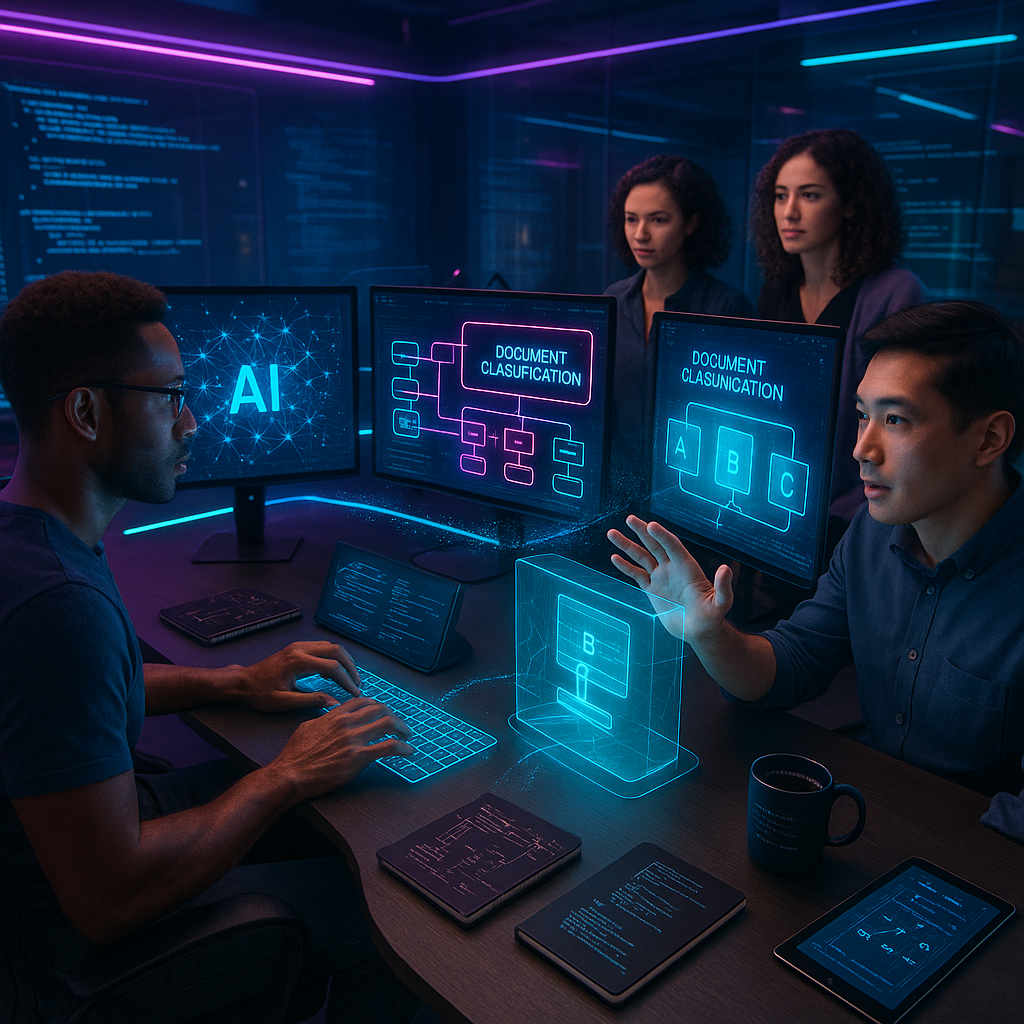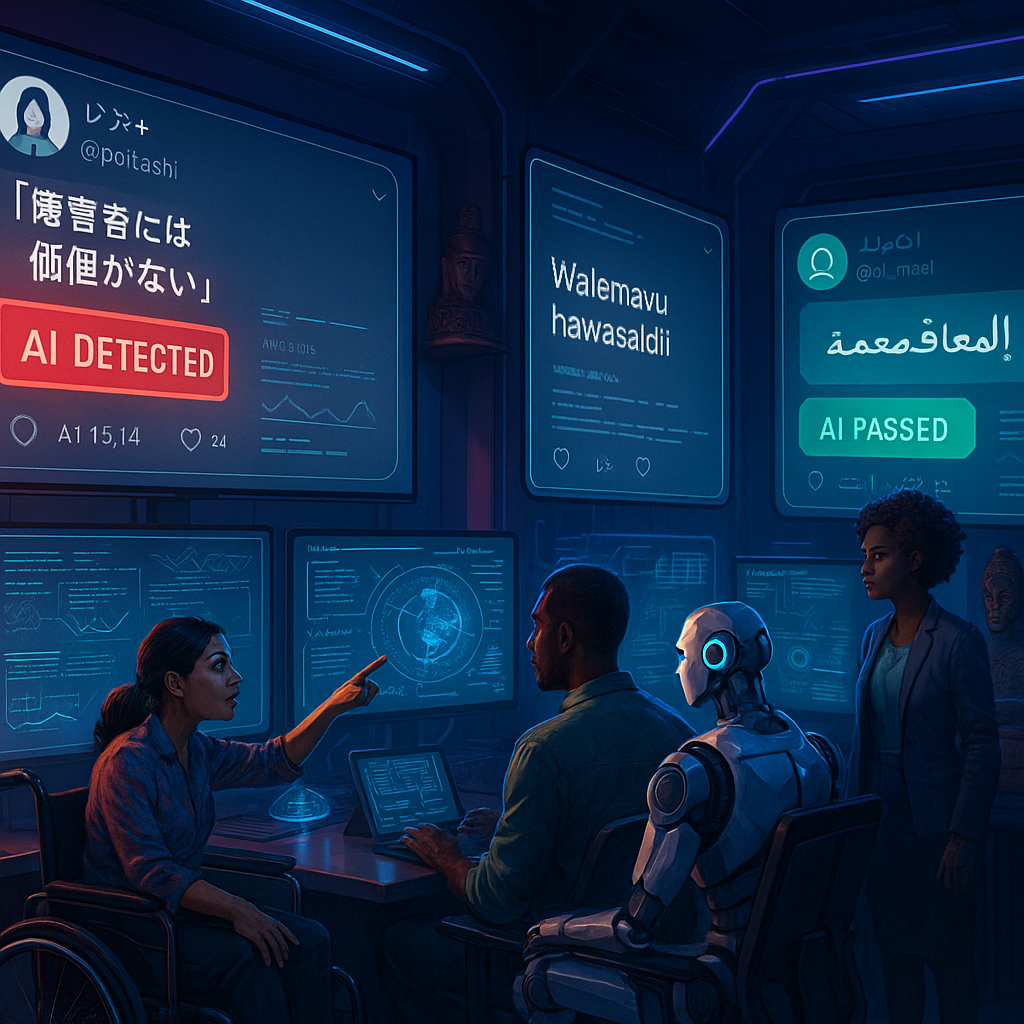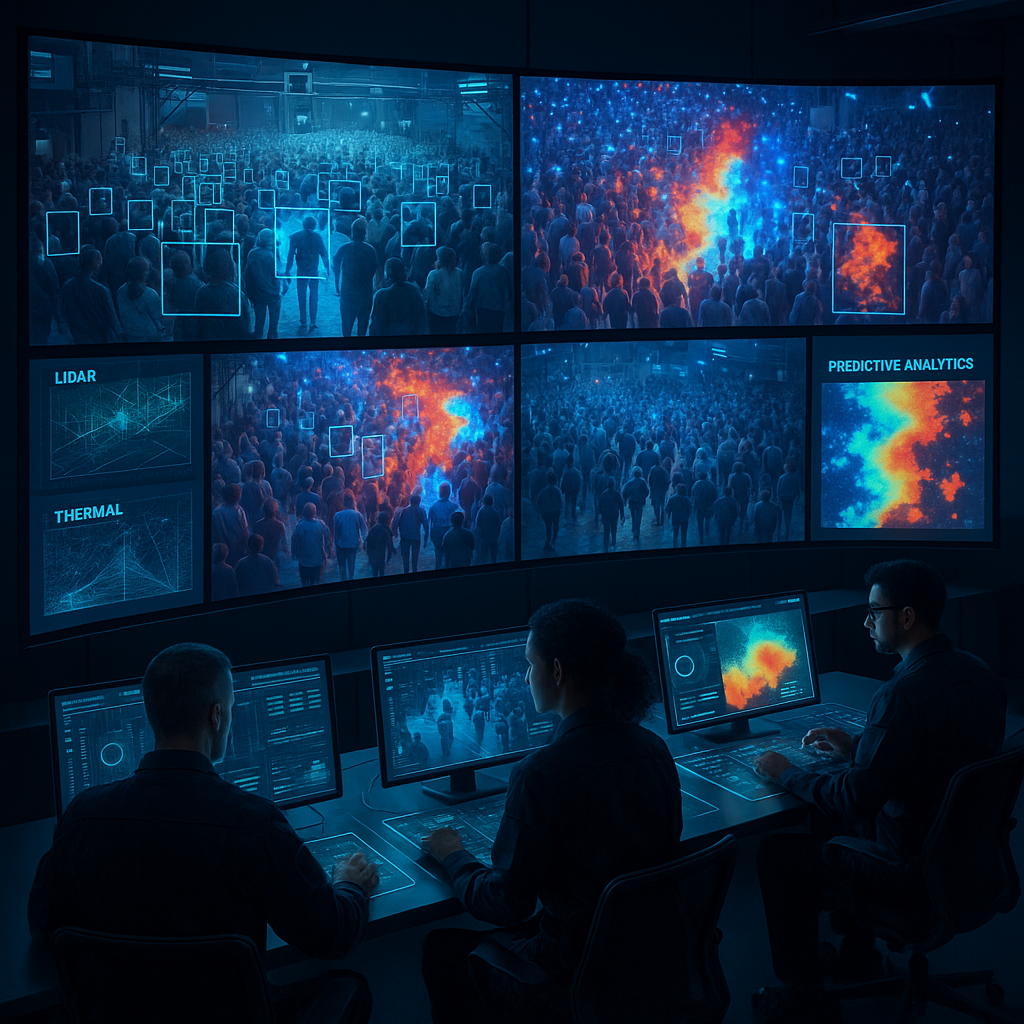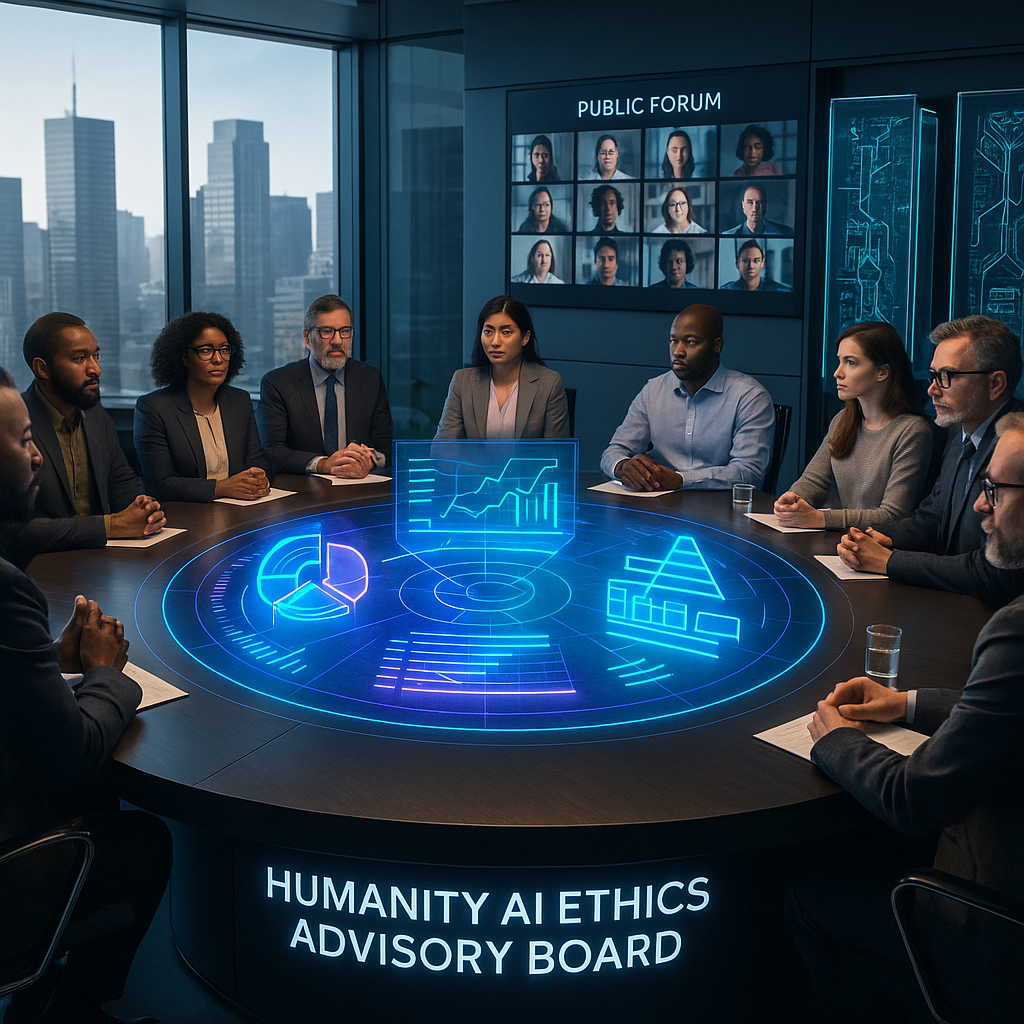Key Takeaways
In today’s rapidly evolving digital landscape, developer productivity is defined by more than sheer technical ability. It relies on seamless collaboration across diverse teams. Free AI APIs and tools are revolutionizing the collaborative ecosystem, enabling both coders and non-technical contributors to automate, innovate, and communicate in ways that were once the exclusive domain of the enterprise elite. The implications are far-reaching, enabling smarter workflows and empowering creative synergy beyond technical boundaries. Here’s what you need to know before integrating these tools into your workflow.
- AI APIs bridge gaps across technical and non-technical teams: By democratizing access to advanced technology, these tools empower everyone—from software engineers to business managers and education professionals—to automate routine collaboration, optimize schedules, and enhance communication without the need for deep programming knowledge.
- Unlock diverse capabilities, from text to image to chat: The spectrum of free AI APIs now encompasses text generation, image classification, chatbots, and beyond. This breadth allows teams to enrich applications with features like smart document summarization, real-time assistance for customer service, and automated content creation in fields from legal to marketing.
- Open source AI models fuel custom, transparent solutions: Freely available models, such as those built on GPT or BERT, can be easily integrated or fine-tuned to meet unique organizational needs. This fosters transparency, gives developers and businesses greater control, and catalyzes community-driven innovation. Whether in healthcare diagnostic aids, finance chatbots, or educational platforms, the impact is tangible.
- Easy integration supercharges workflows instantly: User-friendly SDKs and plug-and-play RESTful APIs mean even small teams can rapidly infuse AI-driven features into collaboration platforms, CRMs, learning management systems, and productivity suites. Heavy infrastructure or steep implementation curves are no longer prerequisites.
- AI tools dissolve friction in meetings, emails, and document workflows: Properly implemented AI collaboration tools automate meeting notes, draft concise emails, and intelligently manage shared documents. By reducing busywork in industries from finance to environmental science, these solutions spotlight human creativity and complex problem-solving.
- Collaboration-first thinking drives sustainable productivity: The true advantage of free AI APIs extends beyond automation. By fostering digital workspaces where both technical and non-technical contributors can co-create and iterate, these tools set the stage for more efficient, inclusive, and resilient teams across every sector.
As we uncover the most transformative free AI APIs and developer resources, you’ll gain insight not only into the specific tools available, but also into how they can be woven into a cohesive collaborative fabric. This boosts productivity, innovation, and creative synergy across any industry. Now, let’s take a closer look at how these “alien minds” are reshaping the collaborative landscape.
Introduction
Artificial intelligence is no longer just a code-writing powerhouse. It has become a catalyst that reimagines how we collaborate. Free AI APIs and developer resources are democratizing access to high-impact collaboration tools and removing traditional barriers between engineers, project leads, marketers, educators, and creative professionals. With just a few lines of integration, today’s teams can automate meeting notes, streamline communications, and seamlessly manage shared documents without complex infrastructure or specialized training.
This shift is more than mere technological novelty. These open and accessible tools foster transparency, enable smarter workflows, and create digital environments where every voice has an opportunity to contribute. As AI becomes more accessible, it redefines routine collaboration, turning it into a springboard for real, sustainable innovation across disciplines like business, healthcare, education, legal services, and environmental research.
Stay Sharp. Stay Ahead.
Join our Telegram Channel for exclusive content, real insights,
engage with us and other members and get access to
insider updates, early news and top insights.
 Join the Channel
Join the Channel
Let’s examine how today’s leading free AI APIs and open-source models can become the engine powering your team’s evolution. Not just making collaboration easier, but fundamentally transforming it.
The Evolution of Free AI Developer Resources
AI development and integration once required deep technical expertise and significant budgets. Today, the proliferation of free APIs and tools is democratizing these capabilities, giving teams of any size access to sophisticated AI-driven solutions. This evolution is dissolving traditional boundaries and sparking innovation far beyond software development alone.
Organizations in finance harness predictive analytics APIs to catch fraud and manage risk in real time. Healthcare providers use AI-powered document management to automate patient intake and optimize diagnostic workflows. Legal teams automate contract review and compliance monitoring, while marketing departments deploy intelligent chatbots to provide personalized engagement. Even educational institutions leverage adaptive AI to personalize learning experiences.
This paradigm shift is about more than new tools. It’s a new collaborative mindset where openness, accessibility, and community-driven progress rewrite the playbook for cross-functional teamwork.
Natural Language Processing APIs
OpenAI GPT-3 API (Free Tier)
The GPT-3 API has set a new benchmark for text-based collaboration with powerful yet accessible language capabilities. Although not fully free, the generous free tier provides:
- Three months of access with defined usage limits
- Multi-language programming support
- Comprehensive documentation and active user communities
The transformative power of GPT-3 lies in its ability to bridge communication divides. For example, a healthcare research group leveraged GPT-3 to automatically generate patient-facing explanations from complex clinical data. This reduced the need for repeated clarification meetings and resulted in faster patient onboarding. In an educational setting, university teams use GPT-3 to provide automated assignment feedback, helping faculty save hours each week.
Hugging Face Transformers
This open-source library universalizes natural language processing for both coders and non-coders:
- Access to a vast selection of pre-trained models across dozens of languages
- Zero-cost inference and deployment options
- A robust, supportive global community
Implementation Success Story: A multinational consumer goods firm integrated Hugging Face’s multilingual summarization models into their team chat, automatically filtering and translating key updates for regional teams, which reduced communication lags by 30%.
Computer Vision and Image Processing
Google Cloud Vision API
Google’s API empowers teams to analyze images at scale with:
- A free tier offering up to 1,000 requests per month
- A comprehensive suite of visual detection features
- REST and gRPC compatibility for versatile use cases
In marketing, teams streamline content moderation for user-submitted images. In retail, businesses automate inventory labeling for rapid restocking. Accessibility advocates use the API to enhance digital documentation by generating alt-text for visually impaired users.
TensorFlow.js
This free, browser-based platform allows developers to build collaborative, real-time AI features directly in the client’s environment with:
- In-browser AI processing to maintain data privacy
- Real-time interaction and immediate feedback
- Reduced reliance on backend infrastructure
Real-world Application: An educational technology company developed a shared digital whiteboard that recognizes and refines handwritten formulas. This enabled remote math classes to collaborate as seamlessly as if they were in the same room.
Conversational AI and Chatbots
Rasa Open Source
With Rasa, organizations access a flexible toolkit to build conversational AI that adapts to their unique workflows:
- Full-stack chatbot and voice assistant development
- Simple customization using internal data
- Seamless integration with platforms like Slack, Microsoft Teams, and WhatsApp
Teams use Rasa to onboard new hires, automate knowledge base queries in legal and compliance settings, and provide always-on internal customer support across time zones.
Microsoft Bot Framework
Microsoft’s free framework brings enterprise-grade chatbot development to any team with:
- Intuitive development tools for rapid prototyping
- Smooth Azure-based cloud deployment or on-premises options
- Support for multiple channels, including websites, social messaging apps, and voice assistants
Success Metric: In a global consulting firm, the adoption of a Bot Framework-powered assistant reduced project manager response times to client queries by 90%, dramatically improving client satisfaction scores.
Stay Sharp. Stay Ahead.
Join our Telegram Channel for exclusive content, real insights,
engage with us and other members and get access to
insider updates, early news and top insights.
 Join the Channel
Join the Channel
Document Processing and Knowledge Management
Apache Tika
Apache Tika unlocks fast, intelligent document parsing and organization by providing:
- Broad support for parsing dozens of file formats (PDF, Word, HTML, and more)
- Automatic metadata extraction for powerful search and classification
- Scalable content analysis for compliance and auditing
Environmental research teams leverage Tika to catalog field reports and sensor logs, streamlining data centralization for faster insights. Law firms automate the organization and searchability of complex case files, which drastically reduces prep time for litigation.
Tesseract OCR
This open-source optical character recognition engine empowers seamless extraction and digitization of printed or handwritten text:
- Multi-language recognition for global teams
- Integration with a variety of programming frameworks
- High adaptability, from mobile apps to large archival projects
Implementation Example: A global supply chain company digitized decades of shipping logs for real-time analytics and compliance. They maintained open access to both structured and unstructured content across distributed teams.
Integration and Workflow Automation
n8n.io
n8n.io’s visual, open-source automation designer allows even non-developers to create complex integrations with:
- Drag-and-drop workflow building for business, education, and technical environments
- Pre-built nodes for common services (Gmail, Slack, Trello, and more)
- Native support for conditional logic and custom triggers
Small businesses automate approval flows for contracts. Universities, meanwhile, standardize notification and grading systems, doing it all with minimal coding.
Apache Airflow
This industry-leading workflow scheduler enables the orchestration of elaborate, multi-step processes:
- Python-based workflow definition for flexibility and power
- Community-driven plugin ecosystem for expansion into any sector
- Task dependency management for robust coordination
Practical Impact: A FinTech firm leveraged Airflow to sync market data pipelines, ensuring regulatory reporting across multiple countries. This resulted in a 60% reduction in compliance overhead.
Developer Support and Code Analysis
Amazon CodeGuru Reviewer (Free Tier)
Amazon’s intelligent code analysis tool helps teams maintain consistent quality standards:
- Automated code review and actionable best practice recommendations
- Integrated security vulnerability detection
- Automatic knowledge sharing across distributed teams
This translates to fewer review bottlenecks for insurance software teams and ensures that healthcare applications meet regulatory requirements from the ground up.
SonarQube Community Edition
Free to use and supporting a wide range of languages, SonarQube offers deep insight into code health by providing:
- Comprehensive code quality, security, and technical debt metrics
- Integration with CI/CD pipelines and project management tools
- Developer-friendly dashboards for fast feedback loops
Measurable Outcome: EdTech startups deploying SonarQube have seen dramatic improvements: a 35% reduction in reviewer workload and a 50% decline in post-deployment issues. This strengthens product confidence and accelerates release cycles.
Conclusion
The explosion of free AI developer resources has fundamentally reengineered how teams innovate, communicate, and ensure quality in the modern digital era. Advanced APIs and open-source tools are no longer the privilege of well-funded enterprises; they are catalysts for creativity, inclusivity, and operational excellence in every field. From healthcare and finance to education, environmental science, legal services, and marketing, these tools are leveling the playing field.
What distinguishes these platforms is not only accessibility, but their potential to elevate human ingenuity. They automate repetitive tasks, distill complexity, and enable teams to focus energy where it matters most: solving meaningful problems and forging real connections. The recorded leaps in engagement, productivity, and product quality are less about isolated improvements and more about a new collective velocity. Here, intelligence, whether human or artificial, is channeled toward shared progress across sectors and societies.
Looking to the future, the real opportunity lies not just in embracing these AI advancements, but in weaving them into the fabric of your collaborative culture. The question is not whether you’ll use these revolutionary tools, but how creatively and thoughtfully you’ll harness them to cultivate innovation, inclusivity, and agility in an ever-changing landscape. As “alien minds” and human minds come together, the teams that learn to co-create and iterate with intelligence (of every kind) will define the next era of collective growth.





Leave a Reply